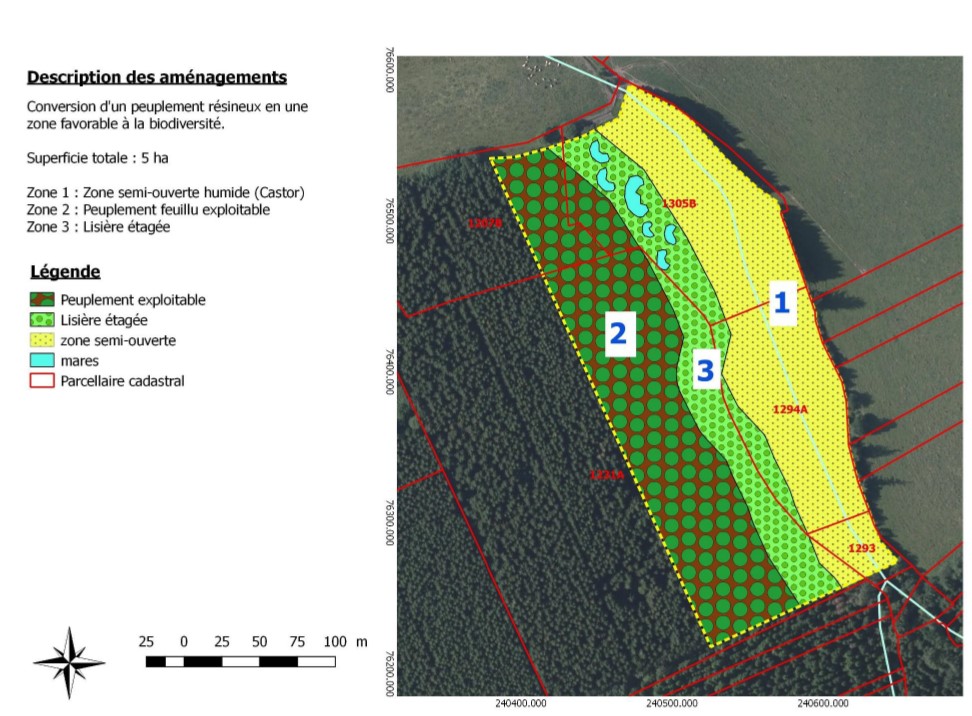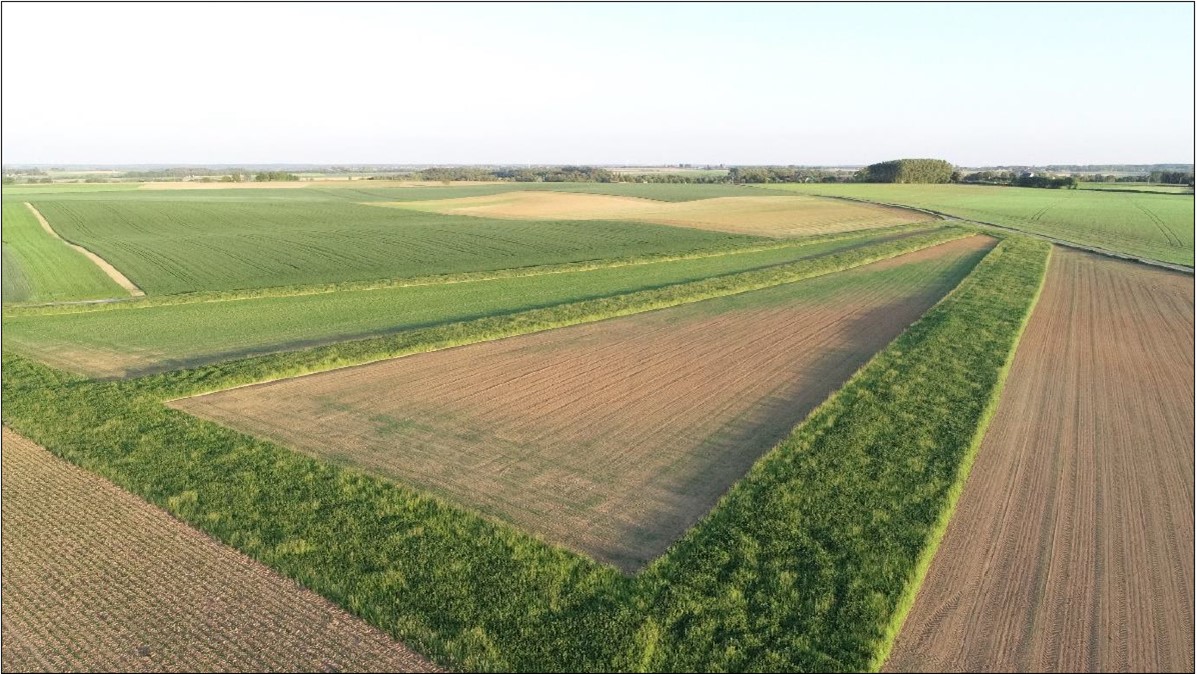Who says wind project, says impact study
The development of a wind project requires the completion of an environmental impact study by a design office (BE) approved by the Walloon Region.
This study aims to assess the integration of the wind farm into its direct and indirect environment, whether at the biological, landscape, acoustic, human or even urban level. In order to assess the biological impacts of the project and the sensitivity of the site in terms of certain species, inventories are carried out on the fauna (avifauna, chiroptera, etc.) and flora (lichens, bocage elements, etc.).
Once the biological inventories have been carried out, the design office must assess the impact that the installation of a wind farm could have on the site in question. Modifications to the layout are first considered, then solutions to compensate as much as possible for the assessed and/or residual impacts are then proposed.

What characterizes a compensation measure
The compensation measures are an integral part of the permit application file on the basis of a protocol defined by the DNF (Department of Nature and Forests) and the DEMNA (Department of the Study of the Natural and Agricultural Environment).
The DNF describes offsetting measures as the positive actions for biodiversity implemented to offset the residual impacts of a project on the environment. Once the radius and area for setting it up are determined, the project leader therefore investigates the most suitable locations based on his knowledge of the site.
Compensation measures must meet the following characteristics:
- to relate to the species(ies) and/or habitat(s) for which the impact has been identified;
- to counterbalance the damage caused;
- to respect as far as possible a principle of proximity when this is justified;
- to be accompanied by clear and precise specifications for the implementation;
- to be operational when the negative impact becomes effective, generally before the installation of wind turbines.
The different types of compensation measures
Most of the wind farms in Wallonia are developed in agricultural areas and can impact certain lowland birds (various species of harriers and sparrows, the yellow wagtail, the crested lapwing, the skylark, the short-eared owl, the quail wheat, red kite and gray partridge).
To counterbalance the potential impact of wind turbines, several solutions can be envisaged: maintaining feeder cover during the winter, permanent grassy headlands, buffer strips along watercourses, planting hedges with a grassy bench, measures favoring the nesting of the crested lapwing or even the creation of extensive hay meadows favorable to the feeding of the kites.
The most classic measures in favor of birds in agricultural plains: Feeder cover bordered by grassy strips (source : an impact study of CSD)
In the context of impacts detected on water birds (various species of storks and egrets), a pond or wet meadow can be created or restored to attract the species impacted by the installation of the wind farm.
Some forest areas may also lend themselves to the installation of wind turbines, particularly softwood crops with low biodiversity value. The compensation measures that can be envisaged in this type of environment consist, for example, in creating or restoring forest areas with a view to setting them up as nature reserves.

Management plan for compensation measures in a forest environment
In the case of certain species of bats deemed sensitive to wind power, the machines can be restricted and stopped when the climatic conditions are deemed favorable for their activity. This may in particular explain why, under certain climatic conditions, machines are at a standstill while the wind is blowing.
Integral part of any wind project
In general, compensation measures are put in place for an area ranging from 0 to 3 hectares per wind turbine installed. Their objectives are to promote the maintenance or enhancement of the local biotope and to compensate for the loss of habitat that may result from the establishment of a wind farm.
These solutions are an integral part of the reflection of project leaders on the installation of wind turbines and the WattElse team, fully committed to the energy transition of tomorrow, is committed to advising its customers in this area in order to best preserve fauna and flora regardless of the renewable energy production site concerned.
Source : Simar J., Kervyn T., Lamotte S., Liégeois S., Bizoux J-P. Projets éoliens – Note de référence pour la prise en compte de la biodiversité. DGO3 – Agriculture, ressources naturelles et environnement, 2012.

